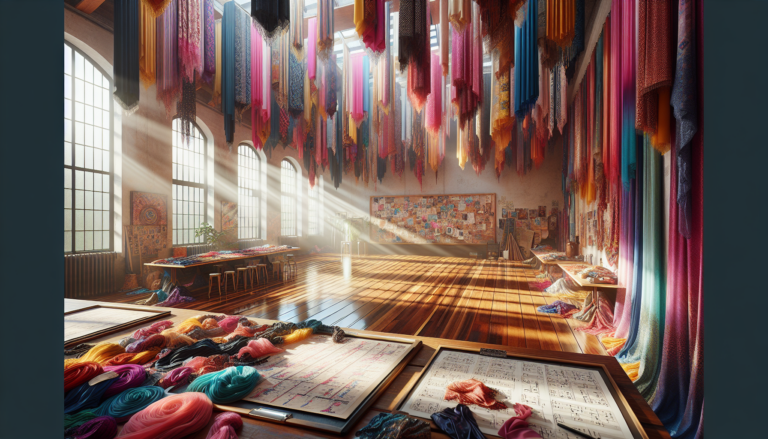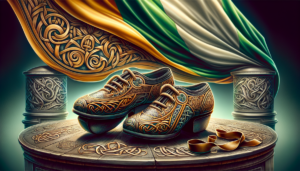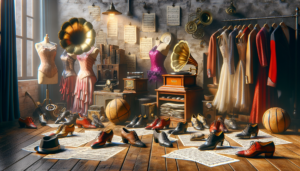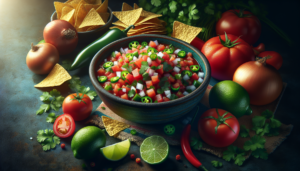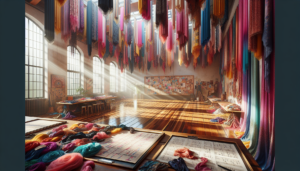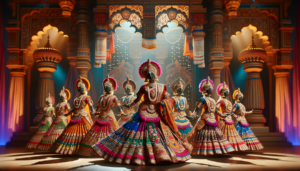Dance composition is the art of creating and arranging movements to form a cohesive and expressive choreographic work. It involves exploring various choreography techniques and embracing the creative dance process to craft unique and meaningful pieces. Dance composition allows choreographers and dancers to unlock their creativity and share their artistic vision through the medium of movement.
Introduction to Dance Composition
What is Dance Composition?
Dance composition, also known as choreography, is the process of selecting and arranging dance movements into a coherent whole. It involves making creative decisions about choreography techniques, such as the use of space, time, energy, and body shapes. Dance composition is a deeply personal and expressive art form that allows choreographers to convey emotions, tell stories, and explore abstract concepts through movement.
Importance of Dance Composition
Dance composition is essential for creating meaningful and impactful dance works. It enables choreographers to:
- Express their unique artistic voice and vision
- Communicate ideas and emotions to an audience
- Explore the vast possibilities of human movement
- Push the boundaries of the art form and innovate
Through the creative dance process, choreographers can craft works that resonate with viewers, provoke thought, and contribute to the rich tapestry of dance.
Fundamental Techniques in Dance Composition
There are several key choreography techniques that form the building blocks of dance composition. These include:
Binary Form in Dance
Binary form dance is a structural framework featuring two contrasting sections, often labeled as “A” and “B”. This compositional technique provides a clear and organized way to present different movement themes or qualities. Choreographers can use binary form to create dynamic shifts in energy, spatial patterns, or emotional tone within a piece.
Retrograde Form in Dance
Retrograde form dance involves performing a sequence of movements in reverse order. This choreography technique adds an element of complexity and interest, as the inverted movements often take on new meaning or highlight different kinesthetic sensations. Retrograde can be used for an entire dance piece or for select phrases within a larger composition.
Ground Base Technique
The ground base dance technique emphasizes the dancer’s connection to the floor. Movements originate from and return to the ground, incorporating body weight, gravity, and tactile sensation. This approach can lend a grounded, organic quality to the dance and encourages dancers to move with greater awareness and intention.
Collage Dance Technique
Collage dance technique involves layering and juxtaposing different dance styles, vocabularies, or movement qualities within a single composition. Much like a visual collage, this choreography technique creates an eclectic and multi-faceted work. Collage can be used to represent different characters, time periods, or emotional states, or to explore the interplay between contrasting movement aesthetics.
The Creative Process in Dance
Steps in the Creative Process
The creative dance process is often cyclical and nonlinear, but it generally involves several key steps:
| Step | Description |
|---|---|
| Observation | Taking in stimulus and inspiration from various sources |
| Improvisation | Freely exploring and generating movement material |
| Selection | Choosing the most compelling phrases or sequences |
| Refinement | Clarifying, editing, and polishing the selected material |
| Structuring | Organizing the material into a cohesive composition |
| Performance | Presenting the finished work to an audience |
| Reflection | Evaluating the process and outcome for future growth |
By moving through these stages with openness and curiosity, choreographers can unlock their full expressive potential and create resonant works of artistic expression in dance.
Incorporating Improvisation
Dance improvisation is a key aspect of the creative dance process. Improvisation involves spontaneously exploring movement without pre-planning or specific choreographic goals. This free-form exploration allows dancers to:
- Generate new and unexpected movement vocabulary
- Break habitual patterns and discover fresh possibilities
- Deepen their understanding of their own body and movement style
- Collaborate and feed off the energy of other dancers
Improvisation can be used as a tool for generating raw material to later shape into set choreography, or it can be an integral part of the final composition itself as a scored improvisation. Either way, embracing improvisation fearlessly unlocks innovation in dance composition.
Integration of Music and Movement
Music and movement are intimately entwined in dance composition. Thoughtful dance and music integration elevates choreography and deepens its expressive power. Choreographers should consider:
Choosing the Right Music
The music selection for a dance piece sets the tone and drives the overall structure and feeling. Choreographers should choose music that:
- Supports their artistic intent and vision for the work
- Inspires interesting movement dynamics and qualities
- Offers a clear rhythm and phrasing to build choreography around
- Evokes the desired emotional landscape for the dancers and audience
Music can come from various genres and sources, from classical scores to modern electronic compositions, depending on the needs of the piece. Alternatively, choreographers may choose to work in silence or with nontraditional soundscapes to create specific environments through movement alone.
Synchronizing Movement with Music
Once music is selected, choreographers explore different ways of relating to it through movement. Some choreography techniques for dance and music integration include:
- Hitting specific accents or rhythmic patterns in the score
- Working in counterpoint or intentionally against the music’s rhythm
- Embodying the emotional qualities or lyrics physically
- Using the music’s structure to determine the composition’s arc
Playing with variations in the relationship between dance and music, such as moving through moments of synchronicity and disjunction, creates dynamism and texture in the choreography. Ultimately, thoughtful music selection and integration can deepen the overall impact and meaningfulness of a dance composition when used with intention as part of the creative dance process.
Cultural Influences on Dance Composition
Dance composition is deeply shaped by the cultural context in which it is created. Cultural influences in dance can be seen in the movement vocabularies, thematic content, and performance contexts of choreographic works across genres and time periods.
Historical Context
Throughout history, dance has been a vital form of artistic expression in dance and a reflection of the sociocultural landscape. Examining major choreographic works from different eras reveals how dance composition evolves in relation to changing social norms, political climates, and aesthetic values. For example:
- The regal court dances of the Baroque period embodying ideals of symmetry, grace, and nobility
- The revolutionary choreography of Isadora Duncan and Martha Graham in the early 20th century eschewing classical technique in favour of raw, expressive, and highly personal movement
- The avant-garde dances of the 1960s Judson Dance Theater reflecting the era’s spirit of experimentation, rebellion, and blurring of artistic boundaries
Understanding the historical lineages and cultural roots of different dance forms enriches a choreographer’s palette and contextualizes their own creative practice within a broader continuum.
Modern Cultural Influences
Contemporary dance composition continues to be molded by a diverse range of cultural influences in dance across communities and geographies. Increased globalization and the rise of technology have accelerated cross-cultural exchange, leading to innovative fusions and hybrid dance forms. In any given choreographic work, one might see traces of various cultural movement practices or references to current sociopolitical issues being grappled with by a particular community.
Today’s choreographers are adding their voices to an ever-evolving art form and shaping its future directions. By staying attuned to the current cultural moment and its conversations, while also honor diverse movement histories, choreographers can create work that resonates on multiple levels. Thoughtfully engaging with culture through the creative dance process is key to keeping the art form of dance composition vibrant, relevant, and connected to the human experience.
Dance as a Form of Communication
At its core, dance is a powerful medium of communication and expression. Choreographers can harness dance as communication to convey ideas, emotions, and experiences beyond the realm of words.
Expressing Emotions through Dance
One of the most fundamental aspects of dance as communication is its ability to express and evoke emotions. Through specific movement qualities, facial expressions, and body language, dancers can embody and convey a wide range of emotional states, such as:
- Joy, celebration, and exuberance
- Sorrow, grief, and anguish
- Passion, attraction, and desire
- Anger, frustration, and conflict
- Tenderness, love, and compassion
By tapping into this expressive capacity of dance, choreographers can create works that resonate on a visceral and empathetic level with audiences. The physical embodiment of emotion through intentional movement choices allows for a direct transmission of feeling that can be universally understood across linguistic or cultural barriers.
Storytelling in Dance
Dance composition can also be used as a vehicle for storytelling and narrative communication. Through a carefully crafted sequence of movements, interactions between dancers, and the use of theatrical elements like sets, costumes, and lighting, choreographers can weave together stories and impart meaning to their work.
Some choreography techniques used in narrative dance works include:
- Developing movement motifs to represent different characters or themes
- Creating clear spatial pathways and relationships between dancers to illustrate plot points or emotional arcs
- Harnessing repetition and variation to establish and then develop story elements over time
- Incorporating gestures and mimetic movements to communicate specific actions, objects, or ideas
By using the body as the primary means of “telling”, choreographers engage the audience’s imagination and invite them to co-create meaning. Dance has the power to evoke entire worlds, events, and character arcs through suggestive and poetic movement, without necessarily relying on literal or linear modes of communication. In this way, dance as a storytelling form can access profound themes and layers of interpretation.
Ultimately, whether abstract or narrative in nature, dance composition harnesses the innate communicative potential of the body in motion. By crafting intentional and expressive movement, choreographers can share impactful messages and stir empathetic connections. The universality of dance as communication invites people to recognize their shared humanity and find resonance across differences. Embracing this communicative power is essential to creating meaningful choreographic works.
Conclusion
Summary of Key Points
Dance composition is a rich and complex art form that allows choreographers to explore the vast expressive potential of the human body in motion. By harnessing various choreography techniques and delving into the creative dance process, dance makers can craft powerful works that communicate ideas, emotions, and stories. Some key aspects of dance composition include:
- Using fundamental techniques like binary form, retrograde, ground base, and collage to structure and add interest to choreography
- Moving through the stages of the creative process, from observation and improvisation to refinement and performance, to develop innovative movement material
- Integrating music and movement thoughtfully to deepen the impact of a dance piece
- Connecting to diverse cultural influences and histories to contextualize and enrich one’s creative practice
- Harnessing the power of dance as communication to express emotions, tell stories, and forge empathetic connections
By engaging with these various elements, choreographers can unlock their unique creative voices and craft meaningful, resonant dance works.
Future of Dance Composition
As an ever-evolving art form, dance composition continues to push boundaries and explore new terrain. Some exciting areas of growth and innovation include:
- The increasing integration of technology and multimedia elements to create immersive, multi-sensory dance experiences
- The blurring of lines between dance genres and styles to generate hybrid forms and fresh movement vocabularies
- The expanding role of dancers’ contributions and co-creation within the choreographic process, emphasizing collaboration and diverse perspectives
- The growing recognition of dance composition’s power to grapple with pressing social, political, and environmental issues and effect change
As choreographers continue to experiment and innovate, they are charting new pathways for what dance composition can be and the impact it can have. By staying open to possibilities, honoring the diverse lineages of the form, and deeply engaging in the creative dance process, dance makers will undoubtedly keep the art form vibrant and essential. The future of dance composition is full of potential to move, challenge, delight, and transform audiences in endlessly new ways.

